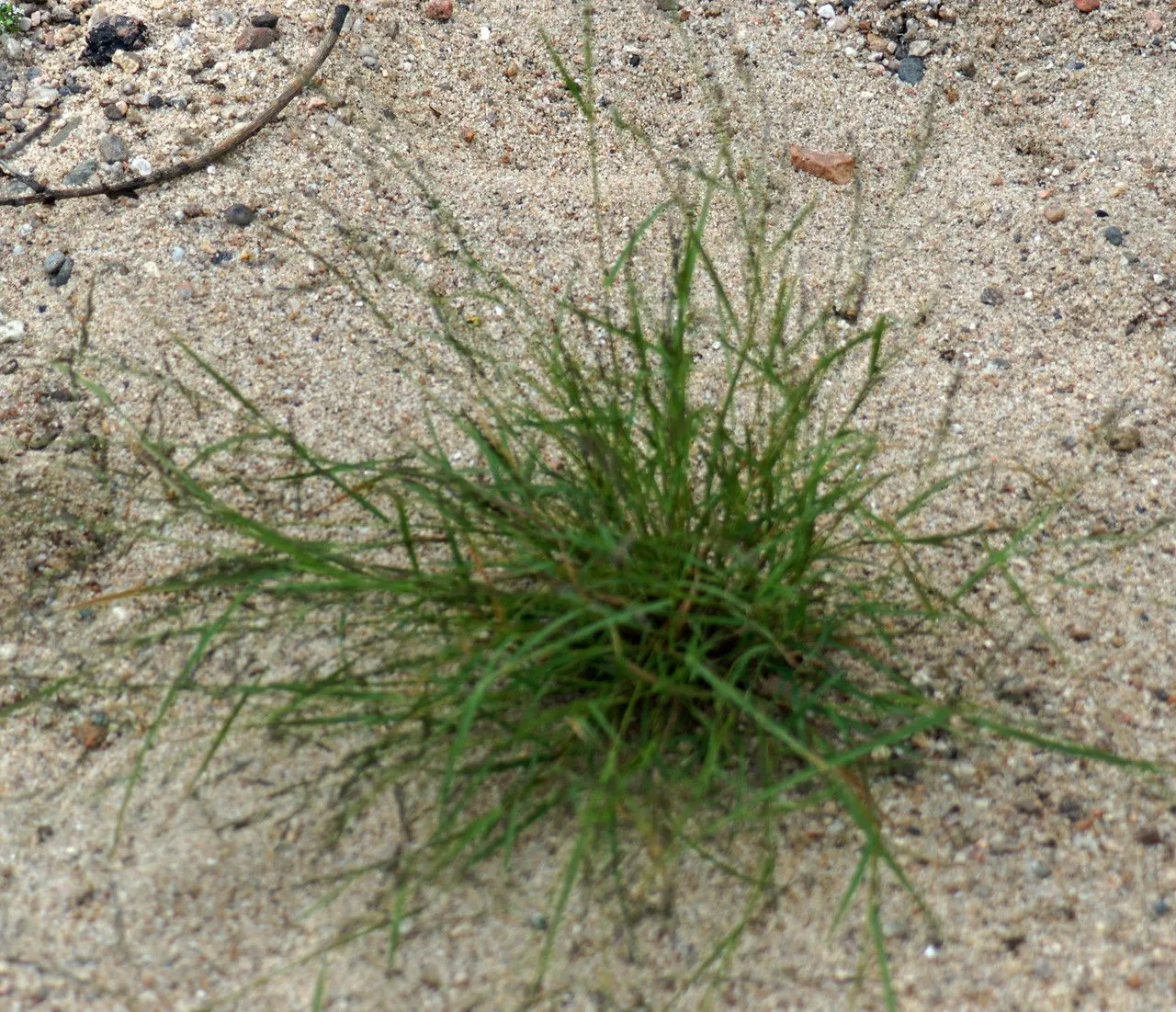
Author: (Michx.) Nees
Bibliography: Fl. Afr. Austral. Ill.: 406 (1841)
Year: 1841
Status: accepted
Rank: species
Genus: Eragrostis
Vegetable: False
Observations: America
Tufted lovegrass, known scientifically as Eragrostis pectinacea, is a remarkable member of the Poaceae family. First described in a detailed botanical account in 1841, this species has garnered considerable attention for its unique characteristics and ecological significance. Its formal classification was established by (Michx.) Nees, whose contributions to botanical literature remain invaluable.
Originating from the diverse landscapes of America, tufted lovegrass showcases resilience and adaptability in various environments. These traits have enabled it to thrive across vast regions, supporting ecological balance and offering numerous benefits to its habitats.
As a tufted perennial grass, Eragrostis pectinacea features slender, erect stems that can reach notable heights, creating intricate tufts that are both visually appealing and functional within its ecosystem. Its foliage is characterized by narrow, linear leaves that add to the grass’s overall delicate appearance, while also playing a crucial role in soil conservation and habitat formation.
Tufted lovegrass is not just a testament to botanical beauty but also serves important ecological functions. It provides ground cover that helps in stabilizing soil, thus preventing erosion and maintaining soil health. Furthermore, this grass is an essential food source and habitat for various wildlife, contributing to biodiversity and ecological resilience.
In landscapes where Eragrostis pectinacea is present, the interplay between its biological traits and environmental contributions encapsulates the intricate balance of natural ecosystems. This species’s persistence and growth speak to the broader narratives of plant adaptation and survival, illustrating the dynamic interactions within plant communities.
The extensive documentation and study encapsulated in the “Flora Africana Australiana Illustrata,” have been pivotal in deepening the understanding of tufted lovegrass. Through historical and contemporary observations, botanists continue to uncover the numerous ways in which this species enriches our natural world.
In summary, Eragrostis pectinacea, or tufted lovegrass, is a noteworthy grass species that exemplifies the beauty, complexity, and ecological importance of the Poaceae family. From its detailed botanical origins to its role in American ecosystems, this grass remains a vital subject for study and appreciation in the realm of plant sciences.
Deu: büscheliges liebesgras, kamm-liebesgras
Ita: panicella americana
Eng: tufted lovegrass, purple love grass, carolina lovegrass, purple lovegrass, western lovegrass
Fra: éragrostide en peigne, éragrostide pectinée, éragrostis en peigne, éragrostis pectiné
En: Tufted lovegrass, Carolina lovegrass, Purple Love Grass, Purple lovegrass, Spreading lovegrass, Western lovegrass
Cs: Milička hřebenitá
Fr: Éragrostide en peigne, Éragrostide pectinée, Éragrostis en peigne, Éragrostis pectiné
De: Büscheliges Liebesgras, Kamm-Liebesgras
It: Panicella americana
Taken Sep 10, 2022 by jacques maréchal (cc-by-sa)
Taken Aug 15, 2000 by Photoflora – Jean-Luc TASSET (©)
Taken Jul 21, 2015 by Tela Botanica − Emilien HENRY (cc-by-sa)
Taken Sep 3, 2018 by Tela Botanica − Liliane Roubaudi (cc-by-sa)
Taken Jan 27, 2020 by Philipp Becker (cc-by-sa)
Taken Sep 14, 2011 by Tela Botanica − Mathieu MENAND (cc-by-sa)
Taken Aug 15, 2000 by Photoflora – Jean-Luc TASSET (©)
Taken Aug 15, 2000 by Photoflora – Jean-Luc TASSET (©)
Taken Sep 3, 2018 by Tela Botanica − Liliane Roubaudi (cc-by-sa)
Taken Sep 3, 2018 by Tela Botanica − Liliane Roubaudi (cc-by-sa)
Taken Sep 14, 2011 by Tela Botanica − Mathieu MENAND (cc-by-sa)
Taken Jul 21, 2015 by Tela Botanica − Emilien HENRY (cc-by-sa)
Taken Sep 3, 2018 by Tela Botanica − Liliane Roubaudi (cc-by-sa)
Taken Sep 3, 2018 by Tela Botanica − Liliane Roubaudi (cc-by-sa)
Taken Sep 14, 2011 by Tela Botanica − Mathieu MENAND (cc-by-sa)
Taken Sep 15, 2009 by Photoflora – Benoit BOCK (©)
© copyright of the Board of Trustees of the Royal Botanic Gardens, Kew.
© copyright of the Board of Trustees of the Royal Botanic Gardens, Kew.
© copyright of the Board of Trustees of the Royal Botanic Gardens, Kew.
Growth habit: Graminoid
Ph maximum: 6.5
Ph minimum: 5.5
Light: 8
Atmospheric humidity: 8
Soil nutriments: 8
Family: Myrtaceae Author: (F.Muell.) K.D.Hill & L.A.S.Johnson Bibliography: Telopea 6: 402 (1995) Year: 1995 Status:…
Family: Rubiaceae Author: Pierre ex A.Froehner Bibliography: Notizbl. Bot. Gart. Berlin-Dahlem 1: 237 (1897) Year:…
Family: Sapindaceae Author: Koidz. Bibliography: J. Coll. Sci. Imp. Univ. Tokyo 32(1): 38 (1911) Year:…
Family: Asteraceae Author: A.Gray Bibliography: Pacif. Railr. Rep.: 107 (1857) Year: 1857 Status: accepted Rank:…
Family: Fabaceae Author: Medik. Bibliography: Vorles. Churpfälz. Phys.-Ökon. Ges. 2: 398 (1787) Year: 1787 Status:…
Family: Aspleniaceae Author: (Cav.) Alston Bibliography: Bull. Misc. Inform. Kew 1932: 309 (1932) Year: 1932…